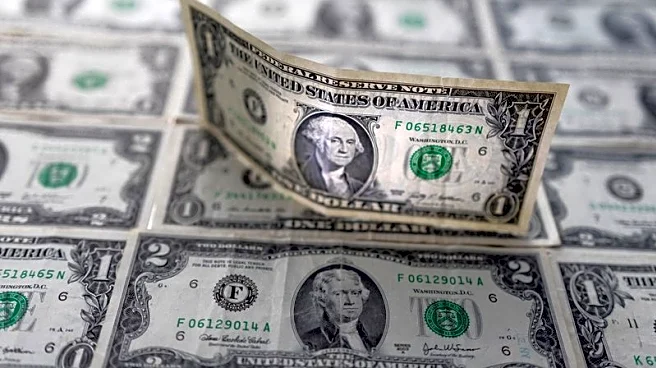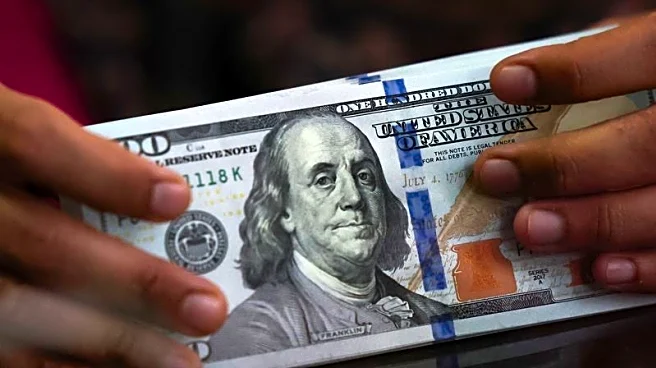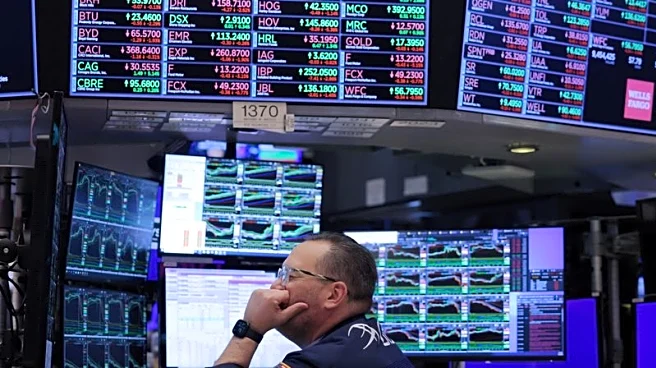What's Happening?
Gold prices have rebounded above the $4,000-per-ounce level, driven by a weaker U.S. dollar and expectations of further Federal Reserve rate cuts. This recovery comes after a significant drop of over 3%
on Monday, marking the lowest point since October 10. The dollar index has decreased by 0.1%, making gold more affordable for holders of other currencies. The market is also reacting to developments in U.S.-China trade negotiations, with President Trump and Chinese President Xi Jinping expected to finalize a trade deal framework later this week. Additionally, President Trump has announced several trade and mineral deals in Malaysia during his Asia trip. Gold has seen a 53% increase this year, reaching a peak of $4,381.21 on October 20, fueled by geopolitical uncertainties and central bank purchases.
Why It's Important?
The rise in gold prices reflects broader economic and geopolitical dynamics, including the potential U.S.-China trade deal and anticipated Federal Reserve rate cuts. A weaker dollar typically boosts gold prices, as it becomes cheaper for international buyers. The Federal Reserve's expected rate cut could further support gold prices by lowering interest rates, which generally makes non-yielding assets like gold more attractive. The ongoing trade negotiations between the U.S. and China are crucial, as a successful deal could impact global economic stability and influence commodity markets. Investors are closely monitoring these developments, as they could affect investment strategies and economic forecasts.
What's Next?
The Federal Reserve is expected to announce a rate cut at the end of its policy meeting on Wednesday, with investors awaiting guidance from Fed Chair Jerome Powell. The outcome of the U.S.-China trade talks will also be pivotal, as a productive meeting between President Trump and President Xi could shift market dynamics. Additionally, the European Central Bank and the Bank of Japan are anticipated to maintain their current interest rates, which could influence global financial markets. Stakeholders will be watching these events closely to adjust their investment strategies accordingly.
Beyond the Headlines
The interplay between gold prices, currency fluctuations, and geopolitical events highlights the complex nature of global financial markets. The potential U.S.-China trade deal and Federal Reserve rate cuts could have long-term implications for international trade relations and monetary policy. As central banks continue to purchase gold as a hedge against economic risks, the role of gold as a safe-haven asset remains significant. These developments may also influence future policy decisions and economic strategies across various sectors.













